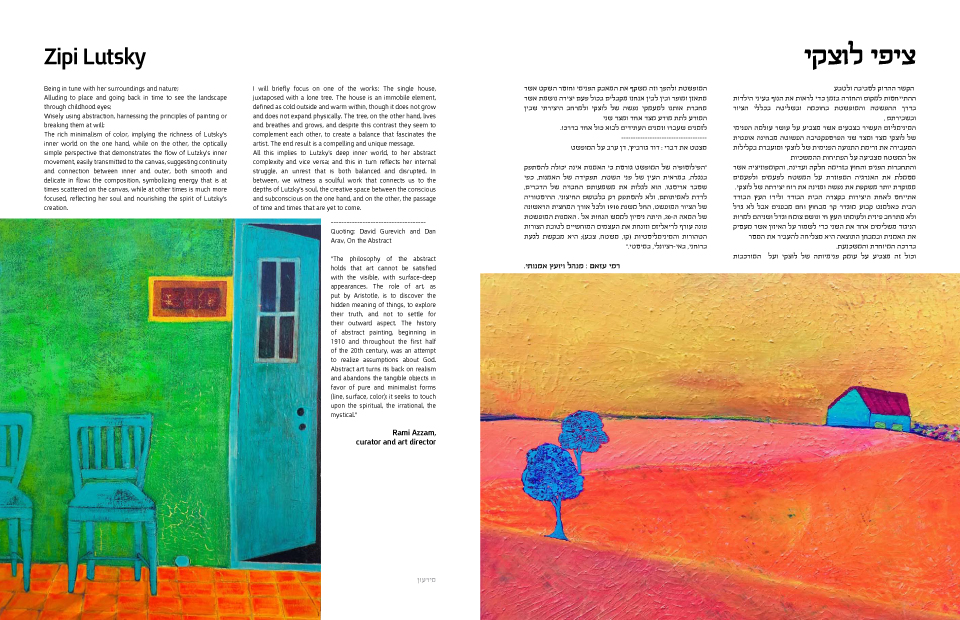
| Home Page | Editor Notices | Museums | Galleries | Publication | Donation | Contact Us |


 | |||||||||||||||
| |||||||||||||||


| |||||||||||||||
| Zipi Lutsky |
Being in tune with her surroundings and nature; Alluding to place and going back in time to see the landscape through childhood eyes; Wisely using abstraction, harnessing the principles of painting or breaking them at will; The rich minimalism of color, implying the richness of Lutsky’s inner world on the one hand, while on the other, the optically simple perspective that demonstrates the flow of Lutzky's inner movement, easily transmitted to the canvas, suggesting continuity and connection between inner and outer, both smooth and delicate in flow; the composition, symbolizing energy that is at times scattered on the canvas, while at other times is much more focused, reflecting her soul and nourishing the spirit of Lutzky's creation. I will briefly focus on one of the works: The single house, juxtaposed with a lone tree. The house is an immobile element, defined as cold outside and warm within, though it does not grow and does not expand physically. The tree, on the other hand, lives and breathes and grows, and despite this contrast they seem to complement each other, to create a balance that fascinates the artist. The end result is a compelling and unique message. All this implies to Lutzky’s deep inner world, to her abstract complexity and vice versa; and this in turn reflects her internal struggle, an unrest that is both balanced and disrupted. In between, we witness a soulful work that connects us to the depths of Lutzky's soul, the creative space between the conscious and subconscious on the one hand, and on the other, the passage of time and times that are yet to come. ------------------------------------ Quoting: David Gurevich and Dan Arav, On the Abstract "The philosophy of the abstract holds that art cannot be satisfied with the visible, with surface-deep appearances. The role of art, as put by Aristotle, is to discover the hidden meaning of things, to explore their truth, and not to settle for their outward aspect. The history of abstract painting, beginning in 1910 and throughout the first half of the 20th century, was an attempt to realize assumptions about God. Abstract art turns its back on realism and abandons the tangible objects in favor of pure and minimalist forms (line, surface, color); it seeks to touch upon the spiritual, the irrational, the mystical." Rami Azzam, curator and art director Read more  |
| all rights reserved - CAN ISRAELI ART REALITY |
| סייבורג מחשבים - בניית אתרים |